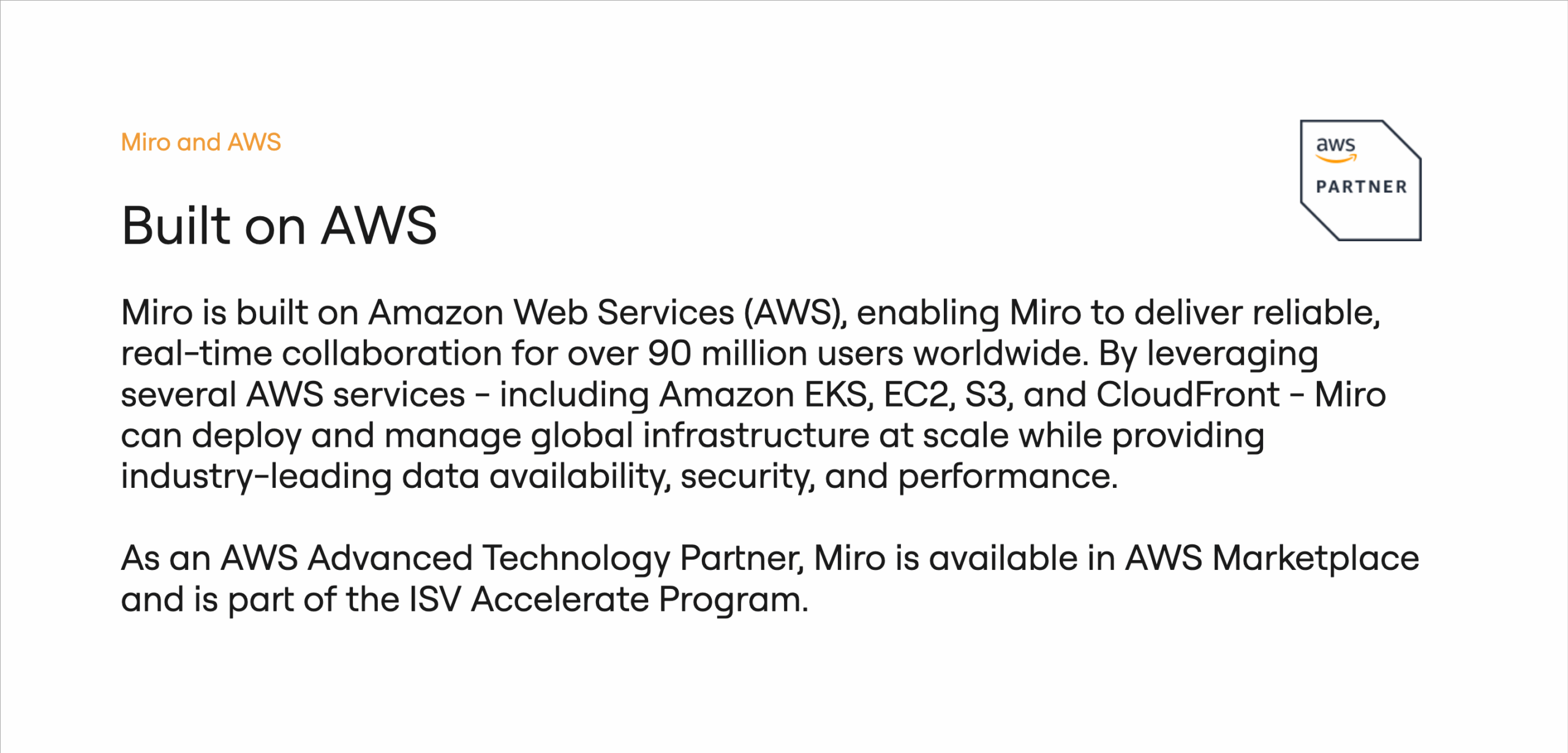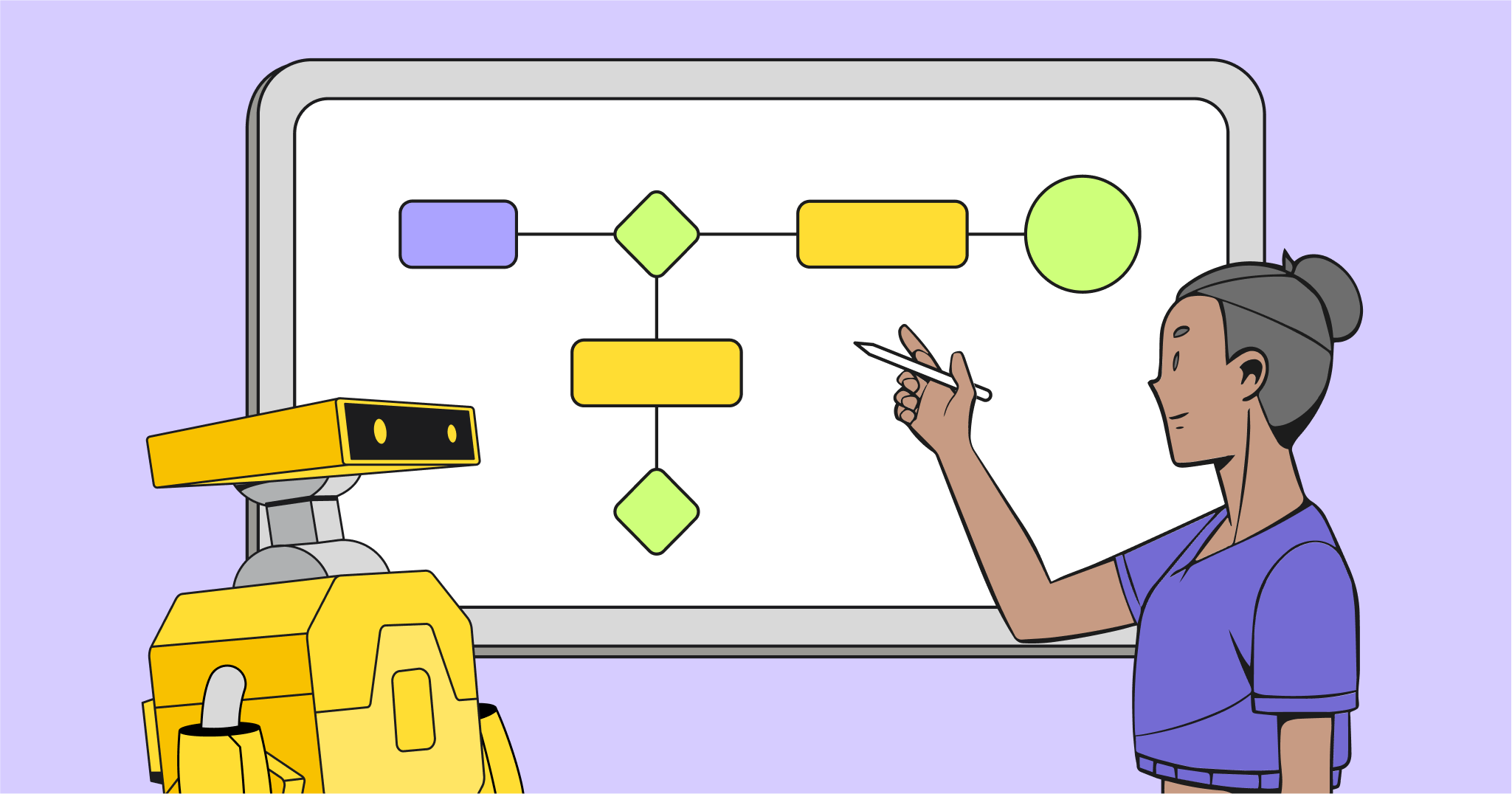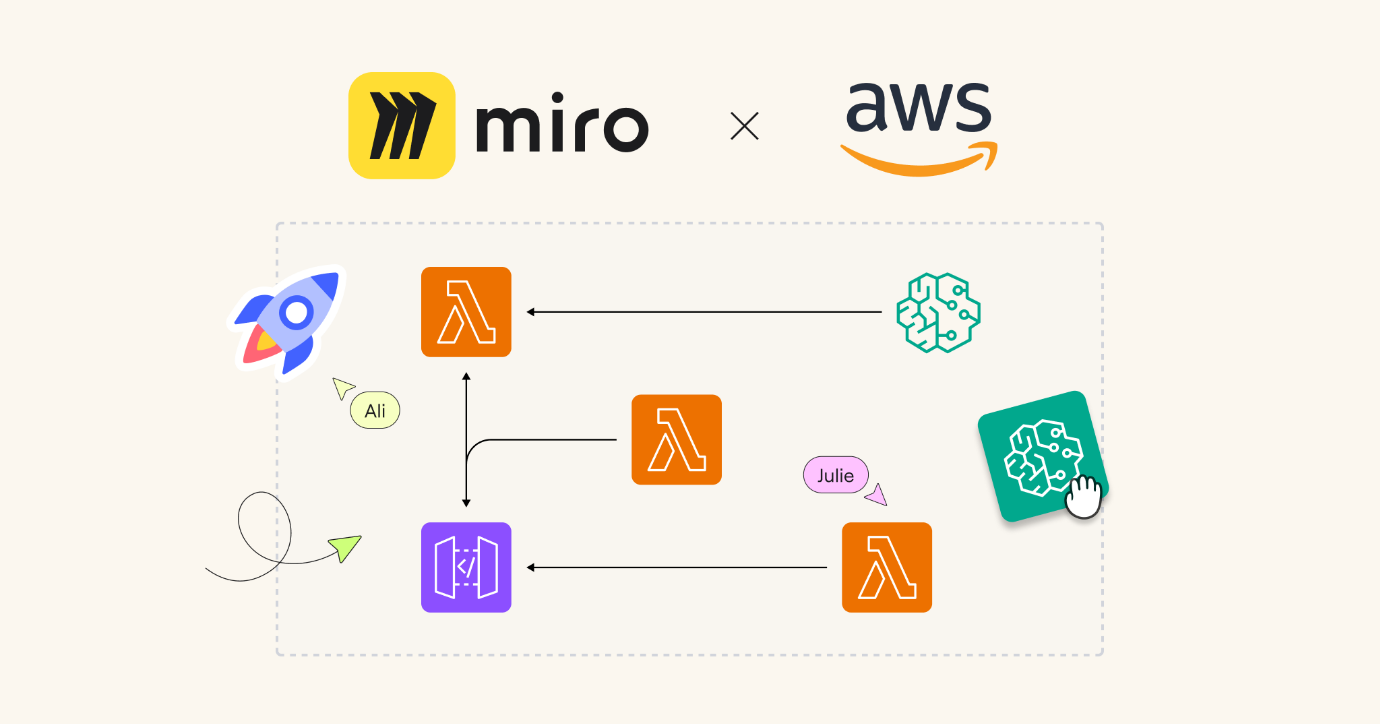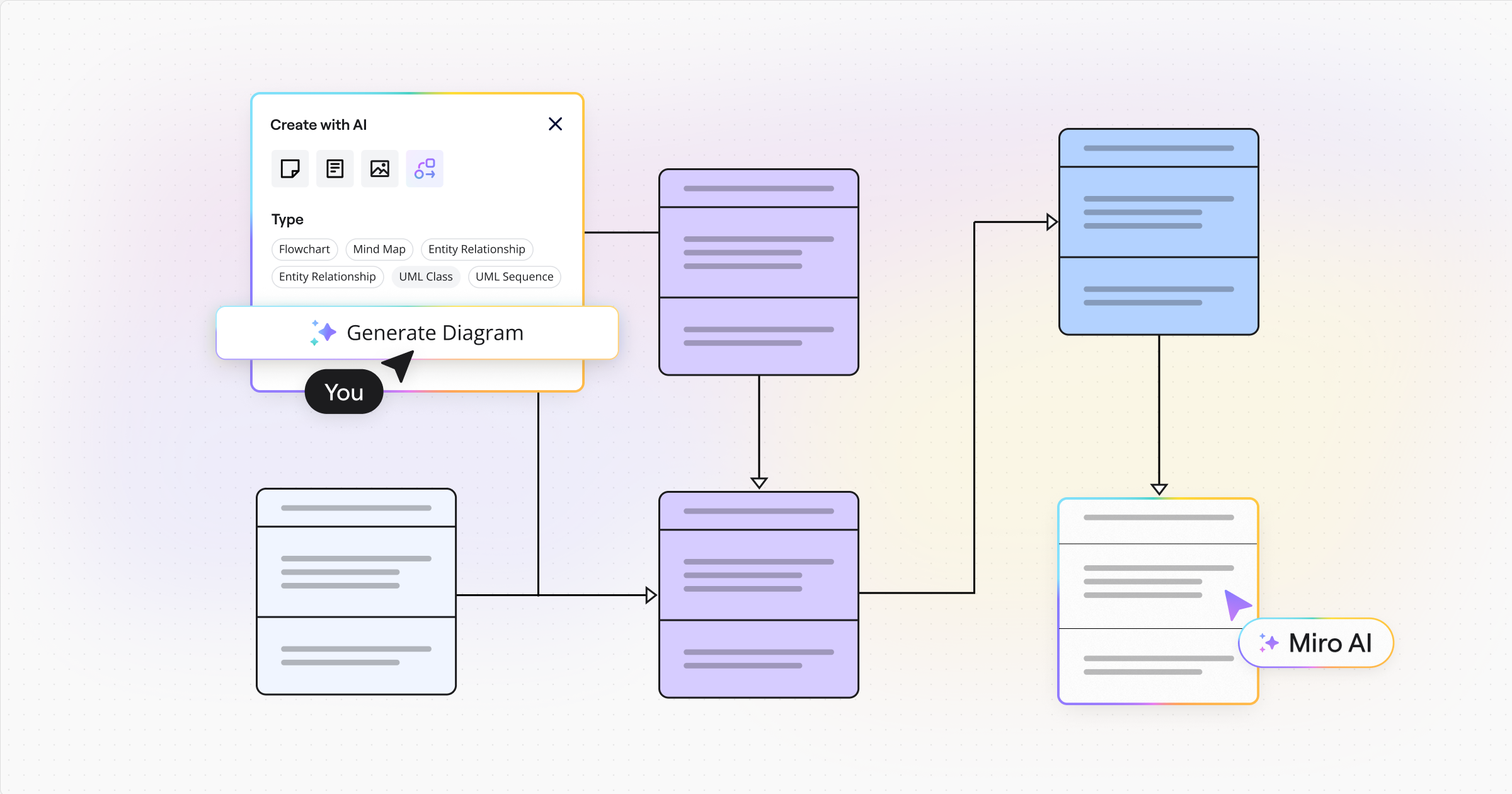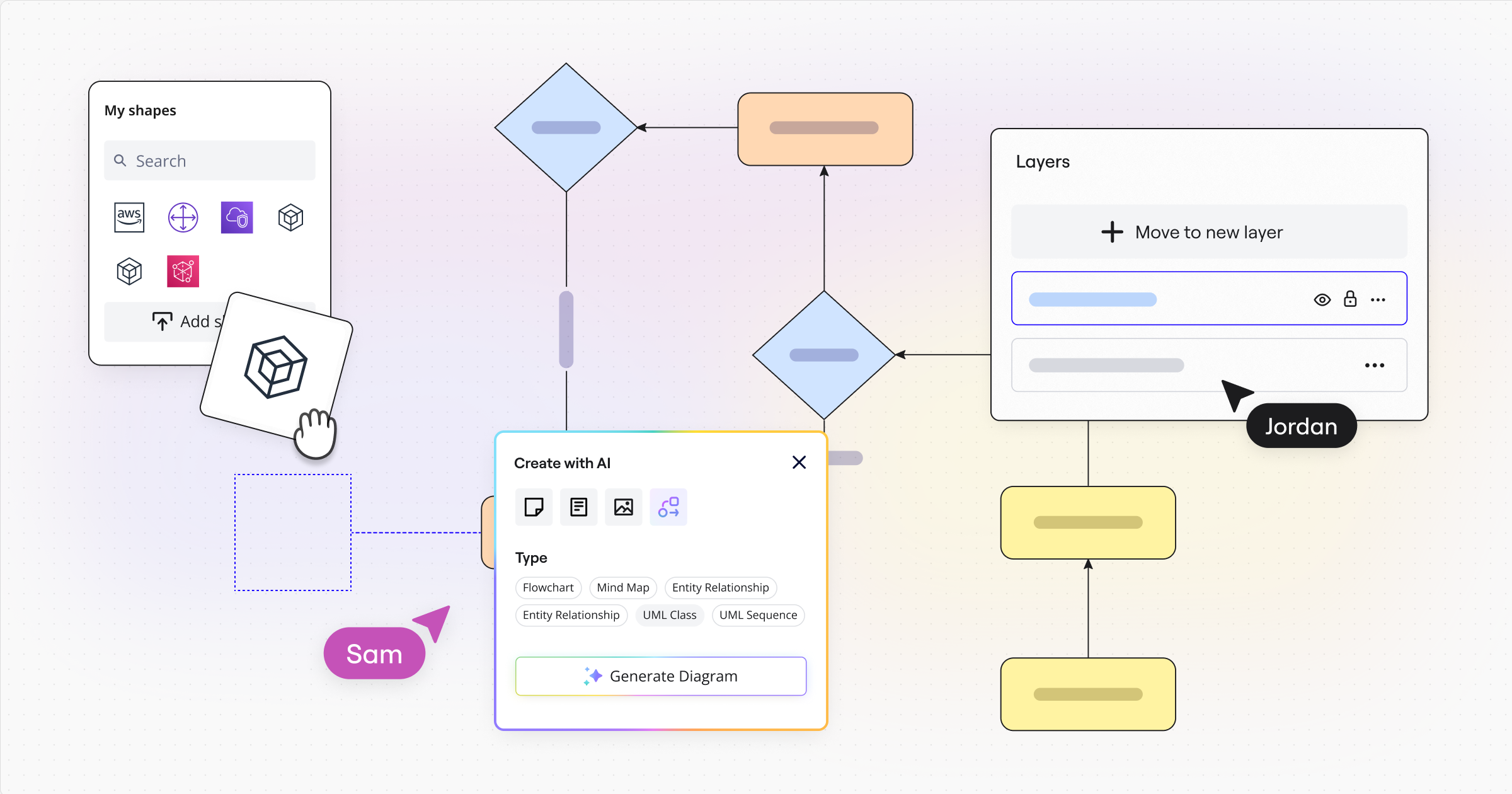Founded in 2021, ClickHouse enables users to perform advanced analytics on both real-time and historical data. The service is built on a complex AWS architecture, designed and maintained by remote teams that face considerable challenges when it comes to virtual collaboration.
Using Miro, those teams were able to:
Collaborate across geographies and time zones
Document AWS infrastructure and associated costs
Onboard new employees faster
Support cross-functional team alignment
Story highlights
- Need for speed: ClickHouse found creating cloud architecture diagrams time consuming for distributed teams, with projects struggling to maintain momentum
- End-to-end solution: Teams at ClickHouse now use Miro to share ideas, design products, map out IT networks, document processes, and hold retrospectives
- AWS integration: Employees use AWS icons to visualize their architecture and follow AWS best practices

The problem: Collaborating on cloud architecture diagrams
“When the company was started, the focus was on building a managed service from the ground up on top of AWS, one of the most popular open-source analytical databases in the world,” says Roopa Tangirala, Vice President of Engineering at ClickHouse. But effective collaboration was difficult for remote teams during the pandemic, especially for engineers tasked with creating complex architecture diagrams.
Information was scattered and hard to find; diagramming was time-consuming; and projects often stalled as teams struggled to maintain alignment across tools and time zones. Clickhouse needed a visual, intuitive tool to simplify collaboration, allowing them to document infrastructure, coordinate designs, and keep projects moving from initial planning to maintenance as the company grew.
The solution: A single innovation workspace for end-to-end delivery
With Miro, ClickHouse gained an innovation workspace for distributed teams. In the words of Engineering Manager Michael Lex, it became the company’s “bread and butter for remote collaboration,” especially for diagramming.
“The main goal was to start designing how we wanted to architect our cloud offering,” explains Tangirala. “That’s when Miro came into being.” At first, this infrastructure was cloud-agnostic, but it wasn’t long before Tangirala’s team adopted Miro’s AWS icons to visualize their architecture specifically on AWS and to follow AWS best practices.
But usage of Miro didn’t stop there, becoming indispensable across various teams and functions at ClickHouse. It evolved from a diagramming tool to a central hub for multiple use cases, including technical design reviews, onboarding, and team planning.
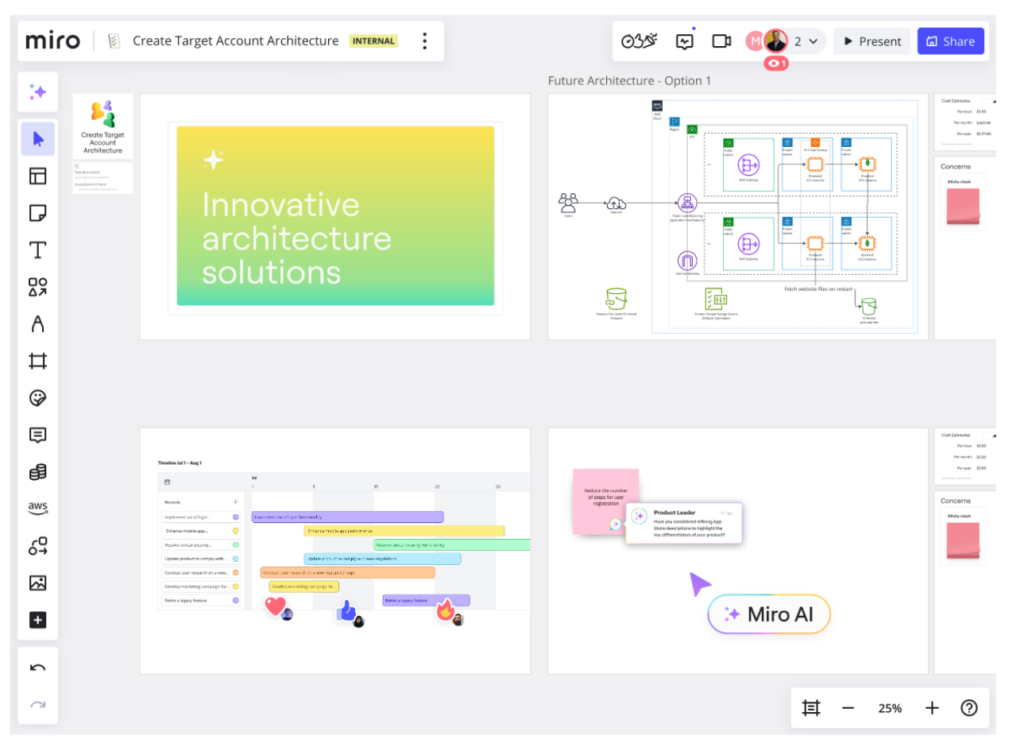
As the team grew, Miro helped organize complex tasks like network isolation for customers, auto-scaling workloads, and new offerings such as Bring Your Own Cloud (BYOC). Additionally, Miro’s visual documentation supports ClickHouse in its communications with AWS, helping clarify infrastructure details and associated costs during collaborative discussions. “It’s very intuitive and easy to use,” says Tangirala, “so it became very popular in the company for cross-team collaboration.”
The end result wasn’t just better ways of working, it was faster feature development, too. “Miro makes it easy for our engineers to collaborate remotely. It lets them create consistent designs and helps everybody get aligned on those designs,” says Tangirala. “Our customers expect us to deliver new features quickly, and Miro helps us to do that.”
The result: Faster design and enhanced collaboration
Miro has become the go-to diagramming tool for ClickHouse, not just for what Tangirala describes as the “big bang architecture”, encompassing the company’s core database and services, but also to stay aligned on everyday design tweaks or innovations.
“Anytime there are technical design questions like, ‘How do we do the network isolation for our customers?’ or ‘How do we auto scale our services?’ these decisions go through technical design reviews, and the engineers use Miro to create and share those designs. So it’s not just big projects, it’s everything.”
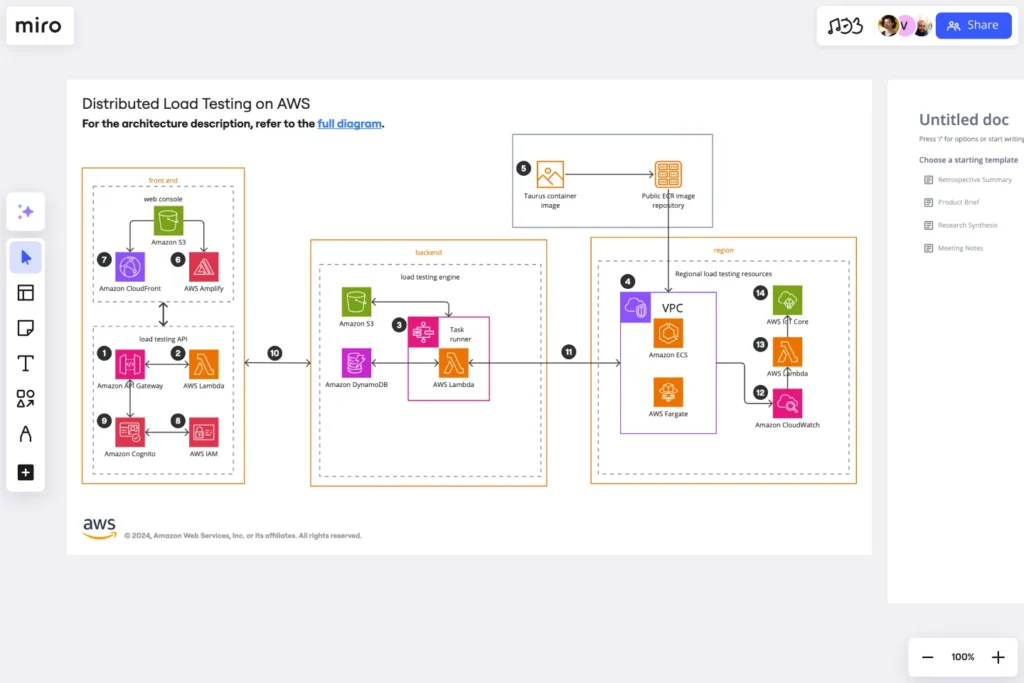
According to Michael Lex, Miro also helps engineers finalize and document these decisions: “It’s also used for documenting designs,” he says. “Every decision is recorded in a Miro diagram where the final design that’s implemented is visualized, which is especially useful for onboarding,” he continues, because all of the context that anybody could need to get up to speed on a project is stored on a single canvas.
Better project planning
As ClickHouse has grown, so has its use of Miro. What started off as a design tool is now central to planning as well.
“Our team has grown from two people to over 30,” explains Tangirala, “so we needed to reorganize. It started with a retrospective with almost 20 people using Miro to collaborate on a team structure that could survive another two to three years. I don’t know how we could have done that kind of collaborative retrospective without Miro.”
Improved planning and collaboration drives greater efficiency throughout the organization. Ultimately, that benefits customers by creating faster development cycles. “I would definitely say that it helps with faster feature development,” says Tangirala. “Our customers expect us to deliver new features quickly, and Miro helps us to do that.”
Take advantage of Miro’s cloud visualization features for AWS, with diagramming, automatic cloud visualization, and cost calculation. Get started with a free trial today.
